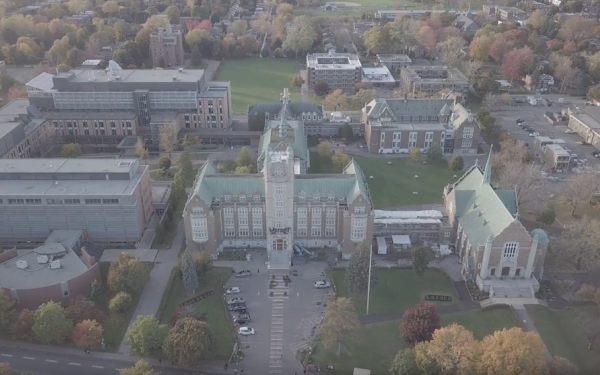The Chilling Reality of Human Indifference
Jeffrey Dhamer, Emmett Till, Takeoff and The Consumption of Trauma Porn
In September 2022, Monster: The Jeffrey Dahmer Story Netflix series came out. I couldn't get through half of the first episode.
Here was yet another example of the unethical re-storying of Black trauma for the purpose of the white viewer’s entertainment.
White creators and producers are not held responsible for the compounded trauma of Black viewers and the trivialization of the impact of race-based violence and trauma. From Twelve Years A Slave to Them, examples of mediatic carelessness in senselessly capitalizing on Black trauma for the sake of entertainment is extensive. It does little to nothing to humanize the victims or honour their stories.
Instead, it retraumatizes Black viewers for the sake of profit under the veil of raising awareness. It packages reenactments of nuance and multidimensionality for the perpetrators and often garners sympathy for them. Unlike their victims, whose names are long forgotten. In the case of Jeffrey Dhamer, it is pure and blatant blaxploitation.
Supporting shows and movies whose aim is to profit from the exploitation of suffering and racism towards a growingly desensitized audience is perverse. If awareness was the goal, why wasn’t it channelled towards the conviction of Timothy Hasslet Jr. for his targeted crimes against Black women in Kansas? Why wasn’t the series a commentary on the failures of police toward Black communities?
With the modern stories of George Floyd, Breonna Taylor, Vicha Ratanapakdee, Ahmaud Aubrey, Joyce Echaquan, Eisha Hudson or Regis Korchinsky-Paquet, instances of rallying to fight against racial violence and justice for people of colour seem endless. The political force of the media as an agent of change cannot be understated. There is a cost for both the visibility of these stories and for those we will never get to hear from lack of accountability.
Watching Monster: The Jeffrey Dahmer Story, I couldn't bear the visceral reminder that Black lives need to matter because they so often don’t, as was the case for Curtis Straughter, Jamie Doxtator, Ricky Beeks, Olivier Lindsey, Konerak Sinthasomphone, Earnest Miller, Anthony Hughes, Joseph Bradehoft, Matt Turner, Anthony Thomas and Edward W. Smith.
"I call the young people who grew up in the past 25 years the Trayvon Generation,” wrote essayist, poet and playwright Elizabeth Alexander in the New York Times piece, The Trayvon Generation. “They always knew these stories. These stories formed their worldview. These stories helped instruct young African-Americans about their embodiment and their vulnerability. The stories were primers in fear and futility. The stories were the ground soil of their rage. These stories instructed them that anti-black hatred and violence were never far.”
I can easily concede that the streaming of these stories and their potent images have been useful for BIPOC social justice, especially Black social justice. But to argue that these types of images solely serve to solicit disgust towards Dahmer and empathy towards his victims is a blatant lie. It overlooks the cost of the constant and non-consensual viewership of racial trauma.
These images can—and have—desensitize us to racial violence by turning it into a spectacle for the sake of entertainment or political clout. These images are emblematic of white supremacy and serve to foment and reproduce racial violence.
When videos of George Floyd's murder began to circulate online, I had an aversion to them. It is perverse. It is hauntingly terrifying and too painful to bear witness to. It is traumatizing. Yet, time after time, without my consent, I am subjected to such images, their potency and overt racism. I am subjugated to the lack of consideration for Black lives and the monolithic narrative of Black subjugation.
Coverage of Emmett Till's death is another example of the propagation of Black trauma through documented violence. Till, 14, was a Black boy murdered in August 1955 in a racially-motivated attack. He was accused by Caroline Bryant, a white woman, of sexual harassment. Bryant’s husband and brother-in-law kidnapped, beat, gouged Till’s eye out, shot him in the head, tied him up naked and threw him in the Tallahatchie river. They were both acquitted by an all-white, all-male jury after about an hour of deliberation.
Bryant would later admit to lying. She expressed, in the unpublished manuscript of her memoir, that she “always felt like a victim as well as Emmett” and “paid dearly with an altered life” for what happened to him. Bryant shamelessly wears her veil of victimhood. A buffoon inconvenienced by her own collusion to murder.
This is the violence of white by-standing, the violence of looking. The purposeful omission of the violence of her inaction, the violence of the passivity with which she watched Till's body get forcibly dragged in the middle of the night.
Mamie Till Mobley, Till's mother, made a choice: the conscious and intentional choice of sanctioning the distribution of those images to utilize their potency, in the hopes of one day seeing justice for her little boy.
"I knew that I could talk for the rest of my life about what had happened to my baby,” said Till Mobley in one of her speeches. “I could explain it in great detail. I could describe what I saw laid out there on that slab at AA Rayner's, one piece, one inch, one body part, at a time. I could do all of that and people still would not get the full impact. They would not be able to visualize what had happened, unless they were allowed to see the results of what had happened. They had to see what I had seen [...] Let the world see what I have seen."
When marginalized communities reclaim these narratives, we reclaim our ability to grieve and demand justice. We are also painfully aware, because of the very nature of our grief, that it does not guarantee empathy, solidarity or as was the case for Bryant, accountability.
Historically, these types of images have circulated in white communities as a way of cementing white supremacy, through the distribution of postcards and photographs of lynchings as souvenirs and mementos stored in attics among other family heirlooms and memorabilia. The Monster: The Jeffrey Dahmer Story series is no different.
Rita Isbell, sister of Dhamer’s victim Errol Lindsey, stated in an interview with Insider:
“I was never contacted about the show. I feel like Netflix should've asked if we mind or how we felt about making it. They didn't ask me anything. They just did it. But I'm not money hungry, and that's what this show is about—Netflix trying to get paid.”
Viewers may attempt to mask their enjoyment by saying things like, “this helps bring awareness” or “this is to honour the victims and their families.” But Dhamer Halloween costumes or the $150k auction of his glasses tell a different story. Bringing awareness by way of inaccurate reenactments of aesthetic Black violence is macabre. It fails to address the fact that Netflix alone benefits from the production of this retelling. If the goal was to humanize and centre the victims and their stories, the families would have been given the opportunity to consent and be compensated accordingly.
We must then inquire about the real motives for the existence of such a show and we must address its impact.
The graphic images and videos from the tragic death of Migos’ member Takeoff are yet another modern example of the Trayvon Generation, the incentivization of the viewing and sharing of trauma porn. This social media-sanctioned spectacle of Black death ignores the impact on the mental health of unsuspecting Black viewers trapped in technological redlining, stuck in algorithmic oppression. On the other hand, white viewers hold the privilege of comfort as they exercise their right to see and circulate these images. They, unlike Isbell, can simply excuse their perverted voyeurism through a so-called sympathetic response that emancipates them from their complicitness in the violence of looking. It enables the same rhetoric Bryant uses in her manuscript—"It's okay because I feel bad" or "There's nothing I could do"—while remaining unscathed.
We should never stop asking ourselves about the cost of watching images of violence. Who gave consent to the exploitation of BIPOC bodies and stories? Who is accountable when consent is not given? We must ask ourselves who is producing and sharing this content and, even more importantly, how does it affect them?
There are nuances in the replication and distribution of violence towards BIPOC bodies. The Jeffrey Dhamer Story and the recently circulated videos and images of Takeoff’s passing hold none.
The solution is not to merely close our eyes and feign ignorance.
Journalist Nehal El-Hadi said it best: "As a rule, I avoid watching the uploaded videos of the moments where Black men and women lose their lives. As a journalist, I think about this—the impulse to bear witness in order to produce testimony—but I don’t need to press play and watch death to feel what it means in my own Black body. Before I could figure out what I was seeing, I was watching a man’s dying moments. I didn’t want to watch Castile’s death, or any of the other deaths on film [...] What differentiated Castile’s death was the fact that the choice of whether or not to watch had been removed from me."
I will never be comfortable with the savouring of racial violence. I will never applaud the dramatization of lynchings. I refuse to be complicit. I refuse to let the white depiction of the Jeffrey Dahmer victims’ stories get the sanctioned visibility and praise that the featurette Till: A Mother's Power deserves. How else would I honour Mamie Till Mobley for her sacrifice? How else do we honour Takeoff’s kin's grief?
There is power in the production and distribution of a story. There is power in how we choose to look at it. We must dignify the importance of intentionality towards what we consume, how we consume it, and why.






_600_375_90_s_c1.jpg)